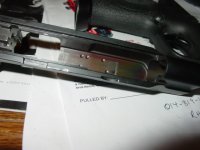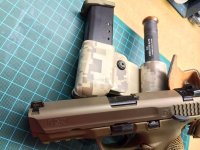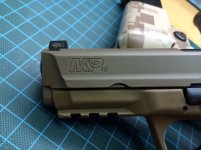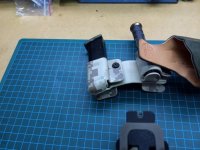I have a question that's been bugging me for a while and I haven't been able to get a clear understanding of what S&W means by 'PVD'...either in the newer LE 151215 or VTAC (assuming it's the same or similar coating aside from color).
I understand the term Physical Vapor/Vapour Deposition but where I'm getting confused is that even S&W seems to define PVD as THE finish (i.e. VTAC: "Durable PVD Coated Finish). PVD is NOT a finish; It's the process to apply a finish. PVD is basically in a group of vacuum coating techniques used to deposit a thin film coating.
For example my watch is DLC'ed (Diamond Like Coating) and it is applied using the PVD process. There are lots of other coatings that could have been utilized using the PVD process, other than using DLC (i.e. TiN, TiAIN, CrN, etc...).
And since coating properties can vary, there's the common misconception that PVD’ing something automatically makes things harder, more wear resistant, durable, etc... It doesn't necessarily. It all depends on the actual coating used.
Now that S&W seems to be coming out with other guns with a 'PVD' finish other than the VTAC, I'm curious what they are actually using. I tried calling S&W but the rep I spoke with had no idea.
Thoughts?
I understand the term Physical Vapor/Vapour Deposition but where I'm getting confused is that even S&W seems to define PVD as THE finish (i.e. VTAC: "Durable PVD Coated Finish). PVD is NOT a finish; It's the process to apply a finish. PVD is basically in a group of vacuum coating techniques used to deposit a thin film coating.
For example my watch is DLC'ed (Diamond Like Coating) and it is applied using the PVD process. There are lots of other coatings that could have been utilized using the PVD process, other than using DLC (i.e. TiN, TiAIN, CrN, etc...).
And since coating properties can vary, there's the common misconception that PVD’ing something automatically makes things harder, more wear resistant, durable, etc... It doesn't necessarily. It all depends on the actual coating used.
Now that S&W seems to be coming out with other guns with a 'PVD' finish other than the VTAC, I'm curious what they are actually using. I tried calling S&W but the rep I spoke with had no idea.
Thoughts?




